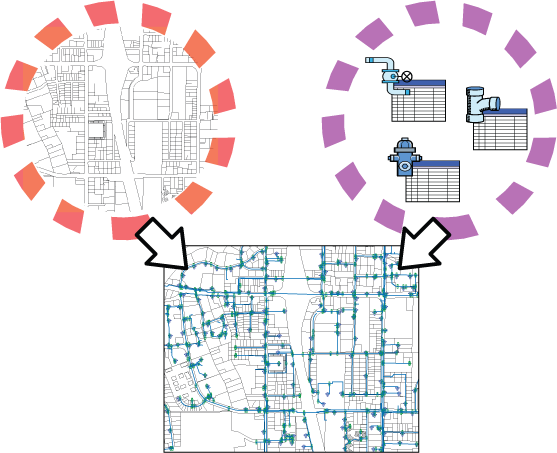Throughout this book, you will see a distinction between “DWG objects” and “features.” For example, you may see sentences like “import SDF features to DWG objects” or “create new features from existing DWG objects.” It is very important to understand this distinction. AutoCAD Map 3D works with both DWG objects and with GIS features. GIS features look like DWG objects, in the sense that they are displayed on the screen as lines, polygons, and points, but they are completely different in the way that they are stored, accessed, and managed. Here are some of the most important differences.
- DWG objects (such as the parcel geometry on the left in the illustration below) are physically stored in the DWG file as geometric entities: lines, polylines, etc. Features are stored in a database or a database-like file and are only referenced in the DWG file.
- DWG objects are added to the map by drafting or by importing geometry from other files. Features are added by drafting or by connecting to a data store.
- DWG objects such as polylines or points can represent anything. Features always represent a specific class of objects in the real-world, such as the pipes, valves, or hydrants shown in the illustration.
- DWG objects are organized by layers which are listed in the Layer Properties Manager. Features are organized by layers which are shown in the Display Manager task pane.
- DWG objects have properties that define their styling, such as color, linewidth, and so on. Features have no inherent styling. Instead they are styled after they are brought into the DWG.

The reason it is important to understand these differences is that there are commands in AutoCAD Map 3D that work on features but not on DWG objects (and vice-versa). For example, most of the skills in this book apply only to features, because the assumption is that you are already familiar with DWG objects. However, we have included some skills that deal with DWG objects, partly for the sake of completeness, and partly to provide you with essential AutoCAD Map 3D skills if you are a new user or if you are making the transition from AutoCAD.


